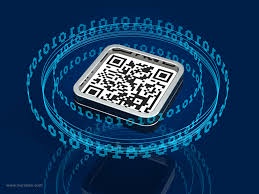A QR code functions like a barcode. Still, it can carry information in two dimensions (horizontally and vertically) and can store much more data than a single-dimensional bar code. Compared to barcodes' 20 alphanumeric characters, the QR code could contain hundreds of characters worth of information. Therefore, the QR code could be used to distribute multimedia content such as a landing page or even an entire ebook. But QR codes can be used for much more than just that. They can even direct a mobile to carry out specific actions. For instance, a theater company could offer the QR code, which does not just direct anyone who scans it to their website to view show timings and information about tickets but also inserts details about times, dates, and places of upcoming performances into the calendar on the phone.
What is the primary technology that comprises QR codes?
This article explores the idea of QR Code, allowing readers to understand the basics that comprise QR Code and why it is popular in various areas. Recently, QR Code has been increasingly widely utilized in multiple places. Yet, QR Code is still not widely used by most businesses, and therefore, more information related to QR Code should be acquired by individuals. Thus, a one-dimensional barcode will be compared to QR Code in this thesis to show the characteristics of a QR Code. This research question will be able to provide the technology that underlies QR Code exploration.
How does QR technology work?
In the simplest sense, the data can be converted into QR codes using a QR code generator, some of which are available online for no cost. Users use summarizing tools to sum data and input the data they want the QR code to display, and the generator transforms into a symbol printed or shown in an electronic format. Scanning apps to read QR codes are available for download (often gratis) to mobile phones, allowing users to point their phone's camera towards the code to read it. The app then analyzes the QR code and implements the information contained in the QR code, displaying a website or playing a video, or providing any other kind of content.
Barcodes are not like QR codes:
The quantity of information transmitted about a product is frequently constrained by the space available on its packaging or in an advertisement explaining its benefits. A customer would need to find a salesperson or ask for further information if they needed more details about the product, such as availability, price, or features. On the back of product packages, barcodes are often found. They use a variety of parallel lines of varying widths to send data, which any machine with an optical scanner can decode.
The barcode transformed how companies managed inventory and pricing. The initial use for tracking equipment and containers came from U.S. railways in the early 1960s. In 1974, two-dimensional barcodes were introduced for use in retail establishments in the United States. Every object has a barcode, from shipping containers to hospital wristbands and personnel ID badges.
Quick Response (QR) code types:
Numerous QR codes can be used to distinguish between various products. Which are:
- Micro QR code: Smaller than the standard QR code, the micro QR code is used when there isn't enough room. The tiniest micro QR codes, which can encode up to 21 letters, are 11x 11 modules.
- Model 1 QR Codes: The Model 2 and Micro QR are based on the Model 1 prototype. The Automatic Identification Manufacturers International (AIMI) standard is certified for one to 14 versions. It can store up to 468 bytes of data in total. With this, up to 707 alphabetic characters can be encoded.
- Model 2 QR Codes: Compared to Model 1, Model 2 features more data and an aligned pattern to provide more significant positional change. The AIMI standard is supported by versions 1 through 40, with version 40 being able to hold up to 496 characters.
- IQR Code: The IQR code can be produced as rectangles or squares when shape or space concerns. Any of the 61 formats could be used to produce it.
- SQRC: SQRC is a particular reading capability that permits confidential information.
- Frame QR: Frame QR is adaptable and supports larger files in image, graphic, or photographic formats.
What are the advantages of the use of QR Technology for businesses?
QR codes are extremely beneficial to everyone who comes in contact with them, consumers, as well as businesses.
-
Fast
QR is a short form for rapid response. These QR codes are designed to make scanning faster for UPC barcodes. They accomplish this by encoding data in two directions instead of one direction. Find out the process by which QR codes function. It's fascinating. By coding information horizontally as well as vertically (which is why they're called a square), they're able to transmit that information from two directions instead of just one. This results in an algorithm that can scan and deliver information much faster.
-
Easy to Use
QR code technology can't be scanned by barcode scanners that shoot horizontal lines, like the ones you'll find at a checkout counter. They are scanned through 2D optical scanners. A normal camera is a kind of optical scanner. That's the reason our smartphones can be easily modified to be capable of scanning QR codes. Scanning a QR code can be as simple as shooting a camera at something. These are the steps to scanning the QR code for good measure. QR code scanners let users scan barcodes further away and from various angles. It's the result of a barcode that is extremely simple to scan. QR codes, as opposed to barcodes, are a simple choice.
-
They Can Be Saved:
It is possible to save data accessible via a QR code to your smartphone. It doesn't matter if it's a URL or simply text. If you scan a QR code, you're not just viewing content, but you're also given the option to take the information. It's a great benefit for those who want to use the QR code but don't have the time.
Conclusion:
QR technologies are more well-known in Japan and South Korea, their popularity is increasing across the U.S. and Europe as people and businesses continue to find innovative and inventive ways to utilize these codes. QR codes are another move away from using keyboards to act as keyboards for mobile computing. Therefore, even though the technology and use of QR codes are expected to change, the direction of mobile computing they are a part of is expected to continue in future.


No comments yet